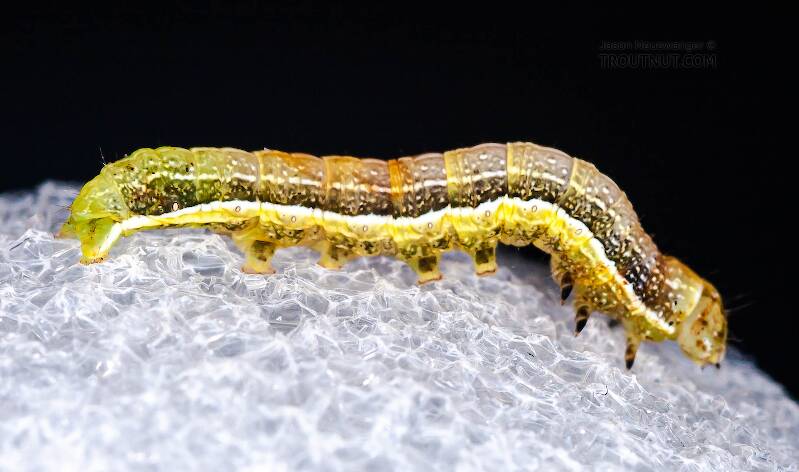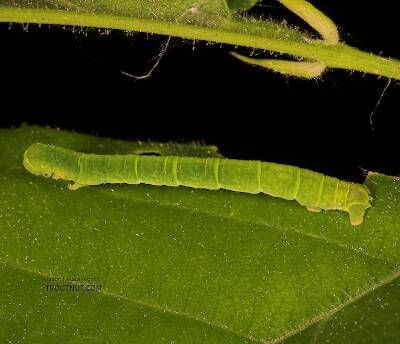
Blue-winged Olives
Baetis
Tiny Baetis mayflies are perhaps the most commonly encountered and imitated by anglers on all American trout streams due to their great abundance, widespread distribution, and trout-friendly emergence habits.
Featured on the forum

This one seems to lead to Couplet 35 of the Key to Genera of Perlodidae Nymphs and the genus Isoperla, but I'm skeptical that's correct based on the general look. I need to get it under the microscope to review several choices in the key, and it'll probably end up a different Perlodidae.

Troutnut is a project started in 2003 by salmonid ecologist Jason "Troutnut" Neuswanger to help anglers and
fly tyers unabashedly embrace the entomological side of the sport. Learn more about Troutnut or
support the project for an enhanced experience here.
Moth Family Geometridae (Inchworms)
These terrestrial moths are sometimes taken by trout when their larvae, the well-known inchworms, dangle by their little silken threads in especially high numbers around June. They may be abundant enough throughout the forest that plenty dangle their way into the water.
Specimens of the Moth Family Geometridae
1 Larva

I caught this inchworm lowering itself to the surface of a trout stream from its silk thread. I saw a couple others floating on the surface, so it's likely the trout were familiar with them.
1 Streamside Picture of Geometridae Moths:
Start a Discussion of Geometridae
References
- Swisher, Doug and Carl Richards. 2000. Selective Trout. The Lyons Press.


